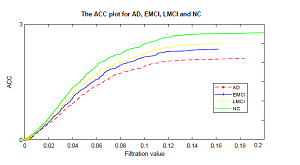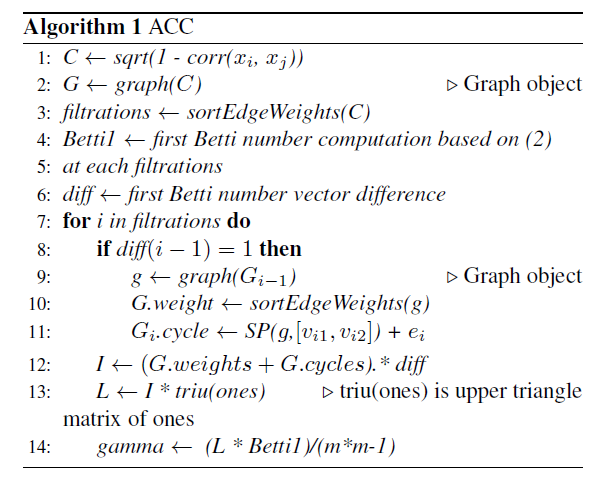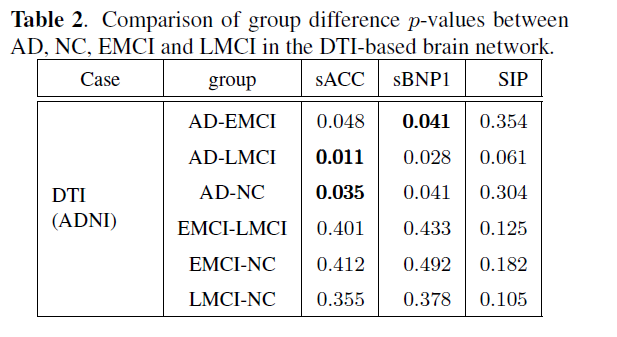A Univariate Persistent Brain Network Feature Based on the Aggregated Cost of Cycles from the Nested Filtration Networks
Mohammad Farazi, Liang Zhan, Paul M. Thompson, Yalin Wang
Abstract
A threshold-free feature in brain network analysis can help circumvent the curse of arbitrary network thresholding for binary network conversions. Here, Persistent Homology is the inspiration for defining a new aggregation cost based on the number of cycles, or for tracking the first Betti number in a nested filtration network within the graph. Our theoretical analysis shows that the proposed aggregated cost of cycles (ACC) is monotonically increasing and thus we define a univariate persistent feature based on the shape of ACC. The proposed statistic has advantages compared to the First Betti Number Plot (BNP1), which only tracks the total number of cycles at each filtration. We show that our method is sensitive to both the topology of modular networks and the difference in the number of cycles in a network. Our method outperforms its counterparts in a synthetic dataset, while in a real-world one it achieves results comparable with the BNP1. Our proposed framework enriches univariate measures for discovering brain network dissimilarities for better categorization of distinct stages in Alzheimer’s Disease (AD).



